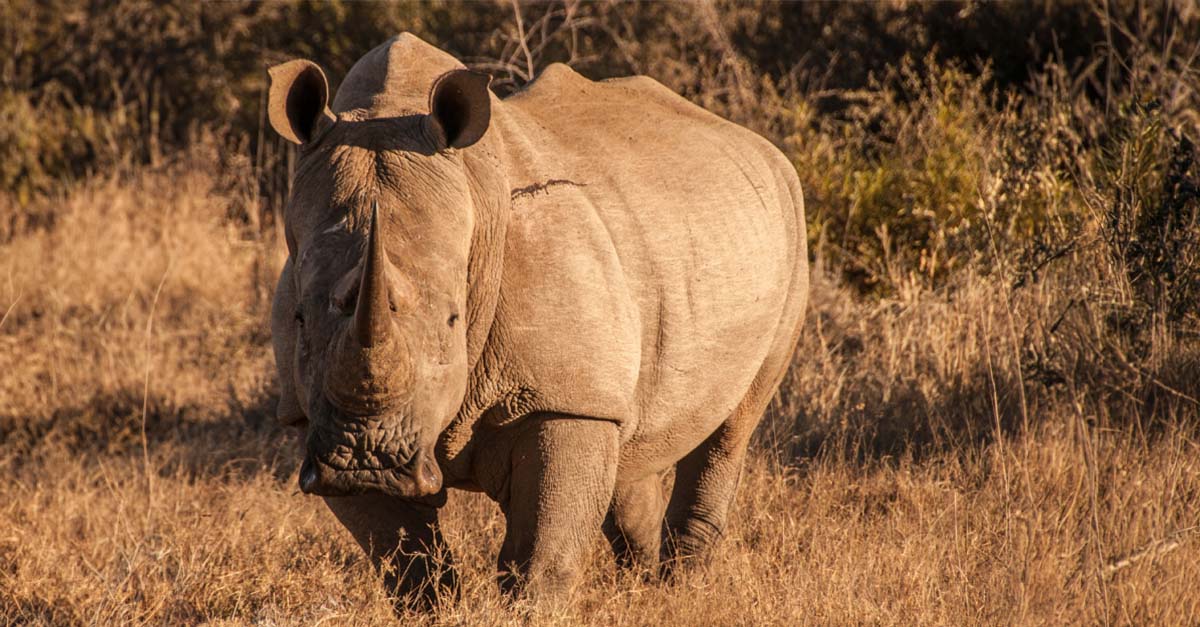Disrupting the Illicit Rhino Trade Across Kavango Zambezi Trans Frontier Conservation Area

This blog was written by IRF partner, Wildlife Crime Prevention (WCP) Zambia
The greatest threat rhino populations have faced over the years is poaching for their horns, driven by the illegal wildlife trade and high demand for rhino horn products. This illicit trade renders rhinos susceptible within ecosystems as the increasing demand for rhino horn, driven by baseless beliefs surrounding their medicinal properties and cultural importance, poses a severe threat to their existence.
To curb this illicit trade, Wildlife Crime Prevention (WCP) Zambia, with support from the International Rhino Foundation (IRF), provides support and training to the Zambian Department of National Parks and Wildlife (DNPW) Intelligence and Investigation Units (IIUs) and Rapid Deployment Teams (RDTs). The IIU and RDT officers conduct investigations and operations on identified suspects trading in rhino horns, aiming to disrupt syndicates in the Livingstone and Sesheke areas of southern Zambia.
The Livingstone and Sesheke regions of Zambia, situated in the Kavango Zambezi Trans Frontier Conservation Area (KAZA) have been identified as major hubs for illegal wildlife trade syndicates due to their geographical location bordering Angola, Botswana, Namibia, and Zimbabwe. These areas house several routes used for illicit wildlife activities. Due to the proximity of these locations to neighboring countries, as well as the abundant source populations of wildlife in KAZA, including rhinos, these areas act as a convergence zone for poaching and trafficking, with intense activity from cross-border syndicates. This has posed a major threat to the small white rhino population in Mosi-Oa-Tunya National Park and is a growing threat to Zambia’s only black rhino population in North Luangwa, as the demand for rhino horn is high and is driven from the Democratic Republic of Congo on Zambia’s northern border.
In the past few years, WCP Zambia has worked diligently to address long-standing illegal wildlife traffic networks operating within and transiting through Zambia, using information gathered over the past seven years. This initiative and other efforts have led to the apprehension of 36 regional traffickers, 14 government officials and one international trafficker. Notably, a considerable number of the apprehended regional traffickers were identified as known suspects in the illicit rhino horn trade and had been under the surveillance of the Zambian Department of National Parks and Wildlife (DNPW) for several years.
This past year also marked the apprehension of a notorious individual identified as the primary perpetrator behind the majority of rhino poaching incidents in Botswana over the past few years. This suspect initially attracted the attention of the Department of National Parks and Wildlife in 2009.
Therefore, it remains crucial to persist in information gathering and operational efforts to monitor the illegal wildlife trade. Through its efforts, WCP Zambia will continue to enhance the protection of the rhino species and other wildlife, ensuring the long-term security of Zambia’s wildlife and populations in neighboring countries.
